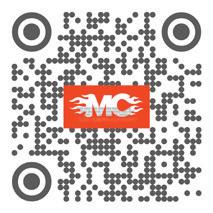Fall Protection for Chimney Sweeps Page 6


Fall Protection for Chimney Sweeps Page 6




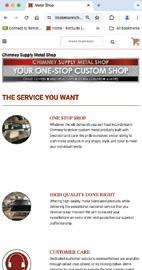
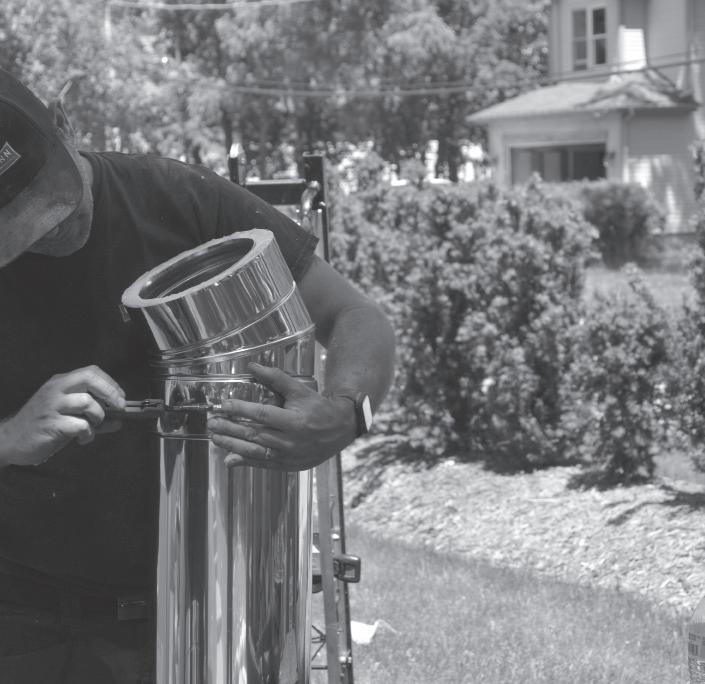



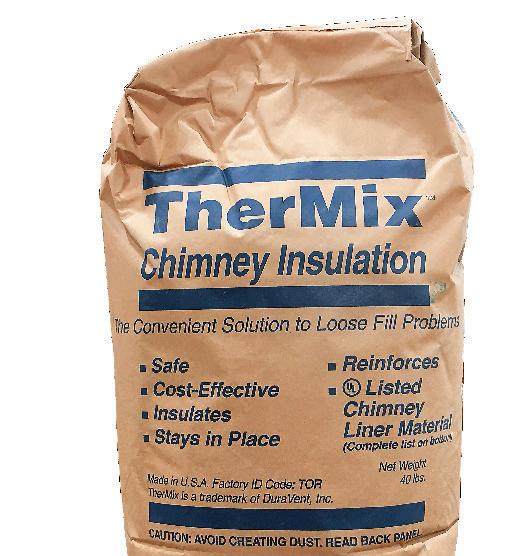




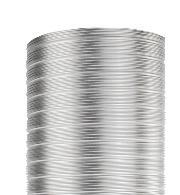





6
OSHA Fall Protection Guidelines
Take a moment to refresh your understanding of OSHA fall protection rules for chimney sweeps.
5
Letter From the President
Some administrative NCSG updates, including our contract with Amplify.
8
Wanted: Subject Matter Experts
Consider lending your chimney and venting expertise to the NCSG Certifications Program.
10 Call for Board Nominations
Nominations are now open. Submit yours by Sunday, December 1.
12
Host an In-Person Certification Exam Event
Have multiple techs looking to get certified? Find out how to host your own certification exam event.
14
Protecting Chimney Sweeps From Respiratory Hazards
Know what respirator to use and how to properly use it to protect yourself from respiratory hazards.
26
Leverage the NCSG Apprenticeship Program
Find out how to unlock grants and tax credits when you register an apprentice.
30 Breast Cancer Awareness Month
This October, Sheryl Isenhour reflects on her breast cancer journey.
36 Regional Updates
What’s new from your regional directors?
On the Cover: Jim Brewer demonstrates the use of proper fall protection gear.

Have you ever seen some interesting things on the job?
Submit a photo with your name and location to marketing@ncsg.org.
Free Classified Ads for NCSG Members
National Chimney Sweep Guild (NSCG) members can run one 35-word classified ad for free each calendar year. 36+ words are $1 per word after. Additional ads are $1/word or $2/word for non-members. Classified ads are non-commissionable and must be pre-paid. To place a classified ad, e-mail marketing@ncsg.org.

Let us know what’s going on!
Submit industry concerns to NCSG’s Policy Action Center. We post live on the website and look into how we can take action. While you’re there, you can also check out the blog for past issues we’ve addressed. Check your email and Facebook to stay up to date!
Kailah Schmitz, CAE, Executive Director director@ncsg.org
Jessica Thornton, Associate Director and Certifications Coordinator jessica@ncsg.org
Bob Ferrari, Director of Education education@ncsg.org
Sydney Kaizer, Director of Marketing and Communications; Sweeping Editor marketing@ncsg.org
Brittney Burton, Membership and Events Coordinator bburton@ncsg.org
Libby Almendarez, Membership and Certifications Coordinator office@ncsg.org
The views expressed in Sweeping do not necessarily reflect the views of the National Chimney Sweep Guild (NCSG) or its staff.
ADVERTISING
To advertise, email Malisa Minetree at sweepingads@me.com or call (317) 603-7854.
NCSG further reserves the right to reject at any time any advertising determined not to be in keeping with the publication’s standards. Acceptance of advertising by Sweeping does not necessarily constitute endorsement of products or services advertised. NCSG does not make any effort to review or substantiate claims made by advertisers.
PHOTOGRAPHY
Stock images by iStock, Adobe.
ARTICLE SUBMISSION
NCSG encourages industry partners to submit press releases and articles to the editor at marketing@ncsg.org. Submissions should contain items of interest or importance to the chimney and venting industry. Submissions should not contain direct solicitations, prices, or other forms of advertising verbiage. Submissions may contain images or artwork attached in a JPG format.
In all cases, NCSG reserves the right to edit submissions for space limitations, keep the release and publish at a later date, or refuse to publish the release for any reason. Neither publishing, nor refusing to publish the submission should be considered a statement of NCSG’s opinion regarding the release.
© 2024 National Chimney Sweep Guild
First, I would like to thank the members, exhibitors, speakers, and volunteers who took the time to attend our 2024 Chimney Expo in King of Prussia, PA. This event continues to demonstrate our commitment to hands-on training. If you missed it, mark your calendar for next August! The event will remain in Pennsylvania.
The National Chimney Sweep Guild (NCSG) Board of Directors is pleased to share that we have renewed a two-year contract with Amplify Association Management. This partnership will continue to enhance our mission of promoting safety, education, business development, and advocacy for the chimney and venting industry. This has been an awesome relationship, and I never could have imagined we would get this far in just four short years.

Bob Ferrari will also continue to serve as our education director. Watch out for additional modules in our virtual reality (VR) program, spearheaded by Bob’s vision and our partnership with From the Future. This is another training tool that we offer our members.
Keep an eye out for our publication on fall protection. This manual is in its final proofreading stage and will be available soon as part of our requirements from the Occupational Safety and Health Administration (OSHA) settlement.
The rest of this issue of Sweeping magazine is centered around the theme Health and Safety. We also share some more information on our certifications and apprenticeship programs.
Just another way the NCSG continues to “serve those who service America’s chimneys!” ■

Bill Thornton, President, National Chimney Sweep Guild
By Jim Brewer, Owner, Rooftop Safety USA
In 2023, the Occupational Safety and Health Administration (OSHA) issued a National Emphasis Program (NEP) on fall protection to step up prevention and enforcement activities. The NEP had a target list of 10 industries of interest, and “chimney cleaning” was number eight on the list. Through my safety work with chimney service companies, I am aware of many inspections, and most of them resulted in fines. The fine for not using fall protection is $16,131, but OSHA does reduce that amount for good faith efforts and company size. Most companies in the chimney service industry qualify for sizedbased reductions.
Your best defense against OSHA fines is a robust safety program where employees are provided the equipment they need to work safely, along with training to know when and how to use the equipment. Another component of the program should include setting clear expectations for safety procedures, along with monitoring and enforcement of those expectations. Remember, most employees “do what you inspect, not what you expect,” so monitoring and enforcement are an important component.
In December 2023, the National Chimney Sweep Guild (NCSG)
reached an agreement with OSHA concerning fall protection requirements for companies in the chimney service industry. You can (and should) download a copy of the full 37-page agreement on the NCSG website (ncsg.org). The agreement provides several options for chimney service companies that previously have never been permitted by OSHA including:
• Use of trees, chimneys, and vehicles as anchors
• Definition and use of fall
protection aid for products like the Goat and the RidgePro
• Definition and use of nonpenetrating roof anchor
• Use of roof ladders
• Exemption from fall protection during inspections
• Use of ladders on roofs to access chimney top
Prior to using these new options, a company must have in place:
• A documented Safety Program for Rooftop Work
• Provide equipment & training to work in accordance with the Safety Program
• A procedure for assessing the hazards at each worksite and creating a Fall Prevention Plan for the worksite
Hazard Assessment
Each job should begin with a Hazard Assessment, conducted by a Competent Person. The Hazard Assessment should consider the following:
• Weather: Wind, rain, snow moisture, temperature

• Roof Evaluation: Condition, pitch, composition, anything covering (moss, snow, ice, leaves), work location, access to the roof and work area
• Site Hazards: Power lines, sloping terrain, skylights
• Nature of Work: Time required, materials and ladders required, safely transporting materials to worksite
You should also identify roof access points and potential anchors during the Hazard Assessment.
A written, site-specific Fall Prevention Plan must be completed by a Competent or Qualified Person before work begins. A flexible, generic template may be used.
Your plan should include:
• Selection of location and method to access the roof
• Selection of fall protection measures
• Selection of necessary personal protective equipment (PPE) (shoes, harness climbing helmet, etc.)
Keep in mind that you must establish your Safety Program before using the newly authorized OSHA options and that their use is voluntary. However, if you decide not to use the new options, you are still required to follow all existing OSHA requirements for fall protection. ■
Jim Brewer is the owner of Rooftop Safety USA, which provides safety training and equipment to the chimney service industry.
You can reach Jim by visiting RooftopSafetyUSA.com, emailing jim@RooftopSafetyUSA.com, or calling (757) 435-0407.


The National Chimney Sweep Guild (NCSG) needs your help! The NCSG is requesting volunteers to serve as subject matter experts (SME) to assist with various phases of the development and validation of the NCSG certification exams – Certified Chimney Professional (CCP), Certified Chimney Reliner (CCR), and Certified Chimney Journeyman (CCJ).
SMEs are experienced chimney professionals with diverse experiences and backgrounds who possess the expertise needed in a particular area. A SME could be an individual with specialized experience or a person who is near retirement; all levels of expertise are welcome and encouraged.
In test development, SMEs identify the content domain, write test items linked to content, review and edit test items, and provide judgments used in setting performance standards.
The NCSG offers the only accredited certifications in the industry. Being accredited by the ANSI National Accreditation Board (ANAB) means that the NCSG has conformed our processes and procedures to adhere to the highest professional standards.
To maintain this commitment, the NCSG needs SMEs to help!
The SME is extremely important when it comes to the creation and revision of tests like the NCSG’s certification exams. SMEs possess the knowledge and expertise needed to develop and review test content and provide judgments about the quality of the test. SMEs will work with a consultant who will guide you in writing and reviewing test items in order to create high quality exams.
“There is no substitute for the insight that can be gained with the use of SMEs,” said NCSG Associate Director and Certifications Coordinator Jessica Thornton. “Your contributions will influence future generations of chimney sweeps.”
Volunteering as a SME presents an excellent opportunity to engage with others in the industry and demonstrate your dedication to the profession.
Various responsibilities may include:
• Participating in an orientation
• Writing test questions
• Reviewing test items for content correctness
• Reviewing test items for quality and linkage to content standards
• Providing judgments used in establishing performance standards
• Networking with professionals and developing relationships
Applications are now being accepted. Please apply online at ncsg.memberclicks.net/smeapplication. There is no deadline to apply. The NCSG Certification Committee will review all applications and follow up with appropriate candidates.
If you have any questions or need additional information, please contact Jessica Thornton at jessica@ncsg.org. ■ SCAN




Serving on the National Chimney Sweep Guild (NCSG) Board of Directors offers a unique opportunity to shape the future of the chimney industry. As a board member, you’ll help guide industry standards, represent your peers, and contribute to the growth and success of the Guild. Additionally, you’ll develop invaluable leadership, management, and communication skills that will not only enhance your professional career but also have a lasting impact on your personal growth.
When you join the NCSG Board of Directors, you gain more than a title – you join a network of like-minded professionals dedicated to advancing the industry. Serving on the board allows you to:
• Attend the NCSG Convention & Trade Show with complimentary registration, providing a wealth of educational and networking opportunities.
• Build long-lasting friendships and business relationships through networking at board meetings and other Guild events.

ScantheQRcode tofilloutthe nominationform.

• Gain leadership experience and influence the strategic direction of the industry, making a direct impact on the Guild’s future.
As an NCSG board member, you will be responsible for representing chimney sweeps nationwide and advancing the mission of the Guild.
Key responsibilities include:
• Attending Four Annual Board Meetings: These include strategic planning in May, the Chimney Expo in August, a virtual meeting in November, and the convention meeting in March. Travel and lodging for the May meeting are reimbursed.
• Contributing to Discussions: Board members participate in the members-only and board of directors’ electronic discussion lists, helping to ensure open communication on important issues.
• Welcoming New Members: You’ll reach out to new and reinstated members via phone and email, fostering a sense of community and connection within the Guild.
• Advocating for the Industry: Board members stay informed on legislation affecting the industry and help connect members with regional updates.
• Contributing to Sweeping Magazine: Board members offer insights and updates to the Guild’s official publication.
• Serving on an NCSG Committee: Board members are expected to serve on at least one committee, playing a vital role in the Guild’s continued success.
Serving on the NCSG Board of Directors offers a rewarding experience that extends far beyond the chimney industry. Non-profit board service allows individuals to:
• Make a Difference: As a director, you are helping to shape the future of an entire profession and
giving back to an organization that supports and advances your industry.
• Expand Your Network: Connect with other leaders across the industry, share insights, and build meaningful relationships that can last a lifetime.
• Develop Leadership Skills: Board members enhance their abilities in areas like governance, strategic planning, and decision-making, which are transferable to any career or leadership role.
• Strengthen Your Reputation: Serving on a national board not only showcases your commitment to your profession but also positions you as a leader in your field.
Join us in leading the chimney industry forward— submit your nomination by December 1, 2024, and be part of something bigger! ■
Region 1 Director: 2-year term
• Represents Connecticut, Maine, Massachusetts, New Hampshire, Rhode Island, New York, and Vermont
Region 3 Director: 2-year term
• Represents Alabama, Georgia, Florida, Mississippi, North Carolina, South Carolina, Tennessee, Virginia, and West Virginia
Region 5 Director: 2-year term
• Represents Arkansas, Colorado, Iowa, Kansas, Louisiana, Minnesota, Nebraska, New Mexico, North Dakota, Oklahoma, South Dakota, Texas, and Wisconsin
At-Large Director: 2-year term
• Represents all NCSG members nationwide
Supplier Representative: 2-year term
• Represents NCSG supplier members
To be eligible for nomination, candidates must be the designated representative of a member company, and the company must have been an NCSG member for at least one year.
Chimney business owners and local guilds can host their own in-person NCSG certification exam testing events.
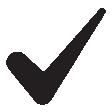


By now you know that the National Chimney Sweep Guild (NCSG) offers three accredited certification exams: Certified Chimney Professional (CCP), Certified Chimney Reliner (CCR), and Certified Chimney Journeyman (CCJ). While the exams themselves are the same, there are two different ways for test takers to take the exams:
Remotely proctored exams enable the test taker to schedule their exam at their convenience from the location of their choosing, using their own computer. Test takers who choose this option will be monitored through their computer by a live proctor employed by ProctorU. The remote proctor verifies the identity of the test taker and ensures that the test taker is following the rules while also assisting in the event of technical difficulties.
In-person proctored exams are held at a specific location at a specific time. Test takers can bring their own laptop or borrow a tablet to take the exam. In-person proctored exams are typically held in conjunction with an event (i.e. state guild event, NCSG convention, etc.). Instead of being monitored by a remote proctor, the exam takes place in a room with other test takers (ranging from 3-30 people) supervised by an individual whose responsibility is to verify the identity of the test takers, make sure test takers are following the rules, and assist in the event of technical difficulties.
It’s easy to set up an in-person proctored exam! This is a great option if you have multiple employees looking to get certified. The NCSG will work with you to plan and facilitate your exam event.
First, you will be asked to complete the NCSG Exam Host Agreement form so we can schedule your event. Then, the NCSG will ship up to 16 tablets and two hot spots for your test takers to use. Finally, the NCSG will assist with promoting your event.
Exam hosts are responsible for arranging adequate exam space with reliable Wi-Fi and securing a proctor. Proctor requirements are as follows:
• Individuals who have seen the content of the exam(s) are not allowed to proctor for NCSG exams.
• Individuals who are providing training geared toward preparing candidates to take NCSG exams are not allowed to proctor.
• Proctors for NCSG exams are not allowed to take any NCSG certification exams for two years.
If your business or local guild would like to plan an in-person testing event, please contact Libby Almendarez at certifications@ncsg.org to get started. ■




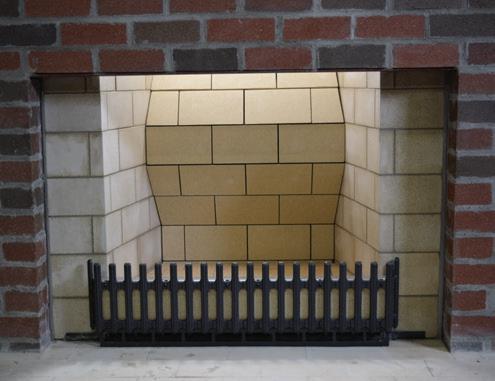






The information in this article is from a paper co-sponsored by the U.S. Centers for Disease Control and Prevention (CDC), National Institute for Occupational Safety and Health (NIOSH), and the National Chimney Sweep Guild (NCSG).
Respiratory protection can be used to reduce sweeps exposure to airborne hazards. Knowing which type of respirator is right for the job at hand and how to properly use it is crucial to protecting sweeps.
Chimney sweeping activities can expose sweeps and others near the work area to toxic particles and vapors. Dusts can even be taken home in vehicles, equipment, or clothing, exposing others to the potential hazard. As early as the 1700s, scrotal cancer was linked to chimney sweeps’ occupational exposure to coal soot. Since then, several studies have shown sweeps have a higher risk of bladder, esophageal, and lung cancer and ischemic heart disease.
• Implement controls such as engineering (e.g., exhaust fans, large vacuums) or administrative (e.g., minimizing exposure time) prior to respiratory protection.
• Require the use of respirators if other controls are not available, feasible, in working order, or are insufficient at reducing exposure to harmful contaminants.
• Ensure respirators at work are used within a respiratory protection program (RPP) as required by the Occupational Safety and Health Administration’s (OSHA) respiratory protection standard, 29 CFR 1910.134. OSHA’s Small Entity Compliance Guide helps small businesses comply with its respiratory protection standard.
• Provide sweeps a respirator approved by the National Institute for Occupational Safety and Health (NIOSH). As required by OSHA, respirators should be provided at no cost whenever they are needed to protect sweeps’ health.
• Understand the different respirator types and the level of protection each provides. Respirators used in chimney sweeping may include:
» Filtering facepiece respirators (FFRs)
» Elastomeric half mask respirators (EHMRs)
» Elastomeric full facepiece respirators
» Powered air-purifying respirators (PAPRs)

• Carefully review OSHA’s Table 1 of Assigned Protection Factors (APF) to determine a respirator’s appropriate APF. APFs indicate the level of protection a sweep can expect to receive from a respirator when an RPP is in place.
• Select the correct respirator based on a hazard assessment. This assessment identifies the contaminants present, their concentration and sources, work activity, and other factors including controls in place.
• Select a respirator with an APF equal to or greater than the exposure determined by the hazard assessment.

OSHA requires that employers implement an RPP to ensure sweeps receive the expected level of protection from their respirator. Without an RPP, the level of protection provided is unknown. RPPs typically have nine parts including medical evaluations, fit testing, and training.
Before wearing a respirator, sweeps must undergo a medical evaluation to identify any health problems that could occur while wearing one. This evaluation could occur during the hiring process.
Once medically cleared to wear a respirator, a sweep must complete a qualitative or quantitative fit test. Employers must provide various respirator models and sizes to determine which respirator fits and is acceptable to the sweep. Fit testing should be done before initial use, annually, and any time a sweep uses a different model, style, or size respirator. Fit testing is only required for tight-fitting respirators.
Employers must train sweeps annually, or when the need arises, on how to properly use, clean, and maintain their respirator. This includes if the type or level of hazard changes or if sweeps use a new type or model of respirator. OSHA’s standard 1910.134 provides requirements for proper use, cleaning and disinfection, and storage of respirators. Manufacturers also often provide this information in their user instructions.
Employers may allow sweeps to use respirators when the environment does not require their use. This is called voluntary use. Employers may provide respirators for voluntary use or sweeps may supply their own. Under voluntary use, the employer must make sure the respirator does not present a health hazard to the sweep. OSHA defines voluntary use requirements in 29 CFR 1910.134(c)(2), Appendix D.
NIOSH considers proper selection and use of respirators essential for protecting chimney sweeps. The following tips may help sweeps reduce exposures:
• Always wear your respirator correctly for the entire period of exposure. Failure to do so can greatly reduce the protection you receive. Make
sure you are in an uncontaminated area when removing or putting on your respirator.
• Always wear at least an N95® level FFR when removing clothes or handling tools that are coated in dust, or dumping debris from a vacuum.
• Wear an approved respirator with a chemical cartridge for organic vapors when using chemical solvents. Follow the personal safety recommendations in the chemical safety data sheet for the product.
• Always wear your respirator at the top of a chimney. If you left your respirator elsewhere, go back and get it.
• Understand that holding your breath instead of using a respirator will not protect you from hazardous particles, gases, or vapors.
• Make sure you do not have facial hair under the sealing area of a tight-fitting respirator. Some

facial hair can grow in or protrude into the sealing surface of the respirator and prevent a good seal. For facial hairstyles that may work with an FFR, see NIOSH’s facial hair infographic.
• Consider using a loose-fitting PAPR if your facial hair prevents a good seal as it does not require a fit test.
• Make sure to change out your chemical cartridge according to the change schedule your employer puts in place if you use a respirator with a chemical cartridge. Manufacturers provide information on the expected service life of their cartridges and how to store them.
• Properly discard and replace your filter or cartridge, or your entire FFR, when it becomes damaged, soiled, or hard to breathe through.
• Always follow the respirator manufacturer’s user instructions. ■
WSA-TDW for air cooled chimney
• The industry standard for keeping out squirrels, birds, leaves, and other debris.


• Works with single wall, double wall, triple wall, or masonry chimneys.
• Sizes available from 3” to 30”+; custom and oversize available. Air cooled and non-air cooled.
• Standard construction is 100% austenitic stainless steel; also available in other alloys including copper and Type 316 for marine/coal appliances.
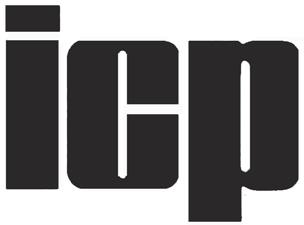
Improved Consumer Products, Inc. PO Box B Attleboro Falls, MA 02763 (508)695-7000 Fax: (508) 695-4209 www.chimneycaps.com
Although there have been many attempts to copy it over the last 40+ years, there is only one Weathershield®
Always ask for it by name and look for the seal of authenticity on top of the cap.
100% made in USA



BETTER COMFORT
Easy and quick ignition. Simple heat control.
MORE EFFICIENT
The chimney fan improves combustion efficiency 15% less firewood is used.
FEWER PARTICLES
An ENERVEX chimney fan can reduce particles 80% indoors. 20% outdoors.
CO2-FRIENDLY
Wood/biomass is considered
CO2-neutral if trees are replanted.
EASY TO INSTALL
The RSHT chimney fan is easy to install
You achieve optimal chimney draft regardless of wind and weather.
RSHT CHIMNEY FAN – is the guaranteed cure for smoke escaping your wood-fired fireplace, or wood, pellet or coal appliances. Installation is clean and easy. QUIET



WBy Stuart Karanovich, Business Development Manager, SaverSystems
This is the third article in a three-part series covering water penetration and remediation in masonry chimneys. In the first two articles, we discussed water repellents and chimney crowns. In this article, we will discuss flashing. To read the first two articles, please visit issuu.com/ncsg and find the August and September issues.
hen I spoke with Jim about writing these articles, I told him that our experience at SaverSystems has shown that if we covered these three areas, we would be able to help chimney technicians understand and solve 80-90% of the water issues they encounter in the field. There will always be that “exotic” water leak that will drive you crazy chasing it, but if you cover the crown, facing, and flashing, you will be successful in most cases.
Broadly defined, flashing is an expansion joint between two dissimilar materials. Its purpose is to allow those materials, each having different temperature coefficients, to expand and contract at different rates without allowing water to penetrate, or to direct moisture out of a structure. The most common and obvious place this occurs is at the intersection of the roof and the chimney.
According to the Brick Industry Association (BIA), wherever you have an intersection of two dissimilar materials in a chimney structure, you should have flashing. This means that in addition to flashing the chimney/ roof intersection, flashing would be appropriate at the intersection of the crown and the chimney, as well as at the base of the chimney and the foundation if it is an exterior chimney. We will discuss these three areas later, but first let us examine some of the common materials we may find flashing a chimney.
Copper is an excellent choice for chimney flashing. It has the ability to be easily worked and shaped, coupled with the ability to withstand wide temperature ranges without buckling or warping. Copper will not usually react with mortar in a negative fashion even when embedded in wet mix. Copper flashing may stain surrounding brick, but this is not usually an issue.
Type 304 Stainless steel is also another suitable material for chimney flashing. While not as malleable as copper it can be formed and shaped, and provides excellent resistance to reaction with chimney materials as well as temperature and water resistance. The Brick Industry Association recommends that stainless steel flashing be no less than 0.01 inch (0.25mm) thick.
While we see galvanized steel used as chimney flashing, its suitability for this purpose is marginal. The durability of galvanized steel as a flashing material is largely a factor of the thickness of the zinc coating in the manufacturing process. The thicker the zinc, the longer lasting the coating.
Problems arise though when bending galvanized steel of sufficient zinc thickness, as the coating tends to crack. This in turn leads to exposure of the
base metal to the elements, and the associated rusting and staining of the chimney and surrounding areas of the roof. For these reasons, galvanized steel is probably best avoided as a chimney flashing material.
Aluminum is another material we see used as a chimney flashing. The newer aluminum flashing that I see being used is coated. This coating is designed to prevent the reaction that will take place between the aluminum and the alkali content in fresh mortar. These are defined as ionic salts and will cause deterioration of the flashing.
As I stated earlier, the Brick Industry Association recommends that wherever you have a juncture of dissimilar materials, you should have flashing to ensure that water penetration does not occur. We will concentrate on three areas in this article. They are the intersection of the base and foundation, crown and chimney, and the chimney and roof.
If the chimney is an exterior chimney, and extends from the grade adjacent to the structure, then base/foundation flashing must be considered. Boiled down to low science, the base/ foundation intersection should be treated in much the same manner as an ordinary brick cavity wall. The BIA recommends that at this junction be flashed. The flashing should extend completely through the brick and angle upwards behind the external brick wall, terminating in a mortar joint of the internal wythe, with weep holes located above, but in close proximity of the flashing.
The intersection of the crown and chimney is often overlooked as an area in need of flashing. To be honest, I have been met with pretty stiff resistance and a few raised eyebrows when this subject is discussed in the field and at our training seminars. I have never personally seen a chimney flashed in this method, but as described on the BIA website, I have to ask why – it makes sense.
They recommend that flashing be placed under the crown, extend through the brick wythe and turn up against the exterior wall of the flue liner. The opposite end should form a downward drip edge above the exterior of the chimney face.
This is probably the most common type of chimney flashing we see. Where the chimney intersects the roof must be flashed correctly or we will allow water to penetrate to the interior. Both base and counter flashing are required to adequately protect the structure.
Base flashing should extend a minimum of four inches up the face of the chimney and roof line. The counter flashing should be lapped over the base flashing no less than three inches, and should extend through the chimney wall and be bent to an upward angle to collect the water which may drain down the back face of the brickwork on the exterior of the chimney. Proper sealing of all the joints and laps in both the base and the counter flashing is essential to ensure the integrity of the flashing.
After this discussion about what we might see in a perfect world, how many chimneys do we
encounter in the real world that meet these standards? If you are like me, the answer is not very many. Too often, we encounter flashing that is improperly installed, covered in roofing cement with extensive cracking, or it simply was never installed.
The good news is that every improperly flashed chimney is an opportunity to solve a customer’s problem and to improve your bottom line. If you have the training and skills to remove and replace or repair metal flashing, this is obviously a good solution. If you do not replace metal flashing, or your customer is not willing to finance that type of repair, there is also good news.
If the flashing at the intersection of the roof and chimney is missing or damaged, an elastomeric flashing repair may be your best option. It has the advantage of being extremely durable, quick to install, and cost effective to the homeowner. Elastomerics are used because typically this intersection will show a fair amount of movement as the chimney and roof heat up and cool down, and when cured, an elastomeric will allow that movement while maintaining a watertight seal. Navigate to chimneysaver.com for more information.
Flashing plays an important role in the ability of a chimney to resist water penetration. With water damage being the number one threat to the longevity of a masonry chimney, doesn’t it make sense to check for proper flashings at every job and offer your customers viable solutions that will protect their investments in their homes and positively affect your bottom line? ■










The concept of Labor Day was first introduced in the late 19th century. It is an annual celebration of social and economic achievements of American workers. The holiday was eventually recognized as a federal holiday in 1894. It is a great opportunity for American workers to spend time with family and friends and also get much needed rest.
This Labor Day (last month), we wanted to recognize not only our hardworking fabricators/ freight team/customer service representatives, but also our valued customers. Without the combined efforts of all of these parties involved, we would not have been able to achieve the sustained success that we experienced this past year.
The final product produced is just a small part of what we are as a business. Our people and your people are ultimately what make a success story come to life. Labor Day was founded on the belief of recognizing workers for their efforts and that aspect of it seems to be lost to some. Although the holiday has passed now, take a moment and extend the hand of gratitude to all those around you.
Brian Clatterbuck, Customer Experience Coordinator, Owens Chimney Covers


The World Federation for Mental Health founded World Mental Health Day to expand education and advocacy about mental health. This year, World Mental Health Day is Thursday, October 10 with the theme “It Is Time To Prioritize Mental Health in the Workplace.”
The unique nature of chimney sweeping work can present various challenges to mental health. Long hours spent working alone in confined spaces, exposure to potential hazards, and the physical strain of the job can all contribute to stress, anxiety, and even depression. Additionally, the seasonal nature of the industry can lead to fluctuations in income and job security, further impacting emotional well-being.
Recognizing these challenges is the first step toward addressing them. Chimney sweep business owners can play a crucial role in promoting mental health within their teams. This can involve offering flexible work arrangements, encouraging open communication about mental health concerns, providing access to mental health resources, and fostering a supportive work environment. By prioritizing the mental well-being of their employees,
chimney sweep businesses can create a more positive and productive work culture.
Let’s make mental health a priority in our industry. By taking proactive steps to support our employees’ well-being, we can create a healthier, happier, and more successful workplace.
To learn more about World Mental Health Day, visit wmhdofficial.com. ■


ABy Jacob Conklin, Apprenticeship Development and Expansion Manager,
s a member of the National Chimney Sweep Guild (NCSG), you have access to the recently approved nationally registered NCSG Apprenticeship Program. This two-year, comprehensive program is approved by the U.S. Department of Labor and provides a structured pathway for training new employees and enhancing your workforce.
This program is an NCSG member benefit available at no additional cost for you. When you register an apprentice into the program, the NCSG is reimbursed up to $571 per apprentice, which is reinvested into the NCSG’s educational programs like virtual reality, hands-on training classes, and certifications.
Moreover, there are a number of states that offer grant money, tax credits, and other incentives to employers for hiring apprentices. While not every state offers these financial incentives, there may still be local funding available at centers known as One-Stops. Each state has a different name for their One-Stop, but they can be found in multiple locations in every state. These centers offer funding that can be used to help with hiring or training costs associated with the apprenticeship.
According to the approved standards of the NCSG Apprenticeship Program, an apprentice is an individual with less than two years of experience as a chimney sweep and lacking the proper certification to be sent on a job on their own. In other words, the difference between an apprentice and a new hire or your current staff may simply be their job title.
The other major difference is that an apprentice is enrolled in a verified and vetted national- or state-approved training program that will provide a nationally-recognized certificate(s)/certification(s) that is accepted by any employer in the industry. As a company, this means you went through a process to ensure your training standards are legitimate and in the best interest of a new employee to your company.
The NCSG Apprenticeship Program provides this exact framework and standards you need to implement the apprenticeship program with your state government, fasttracking the process.
To learn more, please contact Jacob Conklin at jacob.conklin@equusworks.com to discuss how to register the program in your state and tap into funding that will support your company and apprentices. Jacob works for Equus Workforce Solutions, which has partnered with the NCSG to expand the apprenticeship program, and he is already working with several state and local guilds to approve the program in their areas. ■




20 Year History
Most
Conforms
Listed
Listed
Lifetime


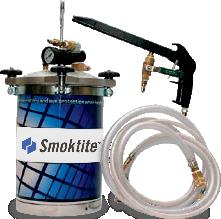

NOVEMBER 29, 2024
REGISTRATION OPENS
DECEMBER 2, 2024
BLACK FRIDAY SPECIAL ENDS
DECEMBER 31, 2024
EARLY BIRD REGISTRATION DEADLINE
JANUARY 31, 2025 ON TIME REGISTRATION DEADLINE
FEBRUARY 7, 2025
HOTEL BLOCK CLOSES
MARCH 4-8, 2025
2025 NCSG CONVENTION & TRADE SHOW





By Sheryl Isenhour, CVC Success Group
How many times can you ignore taking care of yourself? I almost did one time too many.
In December 2023, I scheduled a mammogram, just as I’ve done for the past 25 years. The problem is that I scheduled it knowing I would cancel it before the appointment, just as I had done for 21 of the previous 25 years.
Yes, I only had four mammograms in 25 years.
Several of those four were only because my father had passed away from cancer, and I just wanted to make sure I was okay (a fool’s reason).
This annual mammogram was headed toward the same fate as the others. In the weeks leading up to the mammogram, I did call intending to cancel the appointment. But while I was dialing, my daughter called, and I stopped dialing to answer her
call. Several days later, I tried the process again, but this time a client called while I was dialing.
One week later, I realized the appointment was approaching, so I attempted to call again. Once again, I received a call which I answered, just like the other two. When I hung up from the call, I began to think back over the process that had gone on over the past two weeks.
One call interrupted was not concerning at all, two calls could have been a coincidence, but three calls was a sign that I needed to take seriously.
I did not attempt a fourth cancellation but instead went to my appointment knowing in my mind and heart that the news would not be positive.
After they found the spot and the doctor let me know they were going to do a biopsy, I told her that the results would be positive,
so could we proceed with the next steps? As any good doctor would, she assured me that most results come back negative, but as I had figured, mine did not.
Although breast cancer is much more common in women, affecting 2.3 million women worldwide, it also appears in men too. According to the American Cancer Society, 2,790 men in the United States will be diagnosed with breast cancer in 2024.
The five-year survival rate for localized breast cancer (cancer that hasn’t spread outside the breast) is around 99%. It decreases to 86% for regional


breast cancer, which is cancer that has spread to nearby lymph nodes or tissues, and drops down to 28% for distant metastatic breast cancer.
Age is a significant risk factor; the majority of cases are diagnosed in women over 50.
If there’s one thing to take away from these statistics, it’s this –early detection saves lives.
I’m smart enough to know that breast cancer could happen to anyone, but I never thought it would happen to me.
Looking back after having gone through my breast cancer surgery this year, I wonder what I was thinking. But to be quite honest, had it not been for that




“whisper,” act of God, guardian angel, or just pure luck –whatever you want to call it – my cancer would have gotten much worse, and this story might have had a much different ending.
My ask is that each one of you learn from my experience and either get your annual mammograms or encourage your friends and family to get theirs. Please don’t wake up one day and find out it’s too late.
If you are interested in donating to support resources and programming for people affected by breast cancer, please visit give.breastcancer.org. ■

























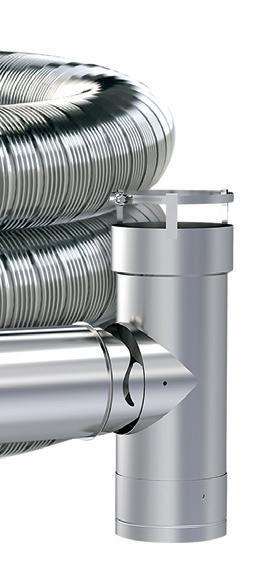
By Jerry Isenhour, Coach and Consultant, CVC Success Group
The challenges of operating a chimney service business in today’s economy are quite numerous, but of all the challenges businesses face, transforming a brand new recruit into a productive and profitable member of your team is likely at the top of the list.
High-performing, productive, and profitable team members do not usually fall into our laps. Having a process in place to build this type of employee is an especially important part of the business system you need to have.
To begin, think for a minute about what kind of skills you want this person to have. Consider the information you have in your own brain that you want this person to know and understand. Lastly, think about how this information will be conveyed to this person.
The first requirement for transforming your new hire is that your recruitment efforts must be ongoing and continuous. Often, we sit in our offices bogged down by the B-Level (or even lower!) players that are consuming our time and resources and simply holding us back. Your business must devote resources to recruit A-Level players to the business and transform B- and C-Level players up to the level we envision them at.
And the business must have systems to make sure we only add assets to our team and never add liabilities to the team. All too often our recruitment efforts halt because we have a full team, and then someone leaves, or you need to terminate them, and you have an open slot. People are not going to work for you forever, and often when someone resigns, we wring our hands in agony due to the thoughts of: What Are We Going To Do Now? Anxiety rears its ugly head and starts to consume and depress us.
We also must have a process of interviewing every candidate to ensure that they meet our company needs, mission and culture. You are going to invest in this new hire, let us make sure we have the right person coming aboard, not simply a warm body, but a person who will be an asset and not a liability.
To realize the success we seek requires systems for the business operations, these systems covering every task, not just spoken systems, but systems that are documented and can be researched to answer and address how the work should be done. I like to call these knowledge bases, and this knowledge base should list every task that the business does, and it is stored in the knowledge base


where it can be assigned to the work force and be consulted any time a question arises. One of the most fulfilling answers that can be given when someone asks a question is: What Does Our SOP Say About That?
Having these documented systems at the reach of each person on your team assists in moving to the direction and dream location you have for each of them no matter what their position or duties in the company.
That is the first step of assembling your process for success in moving these new hires to the position of being efficient, effective, and profitable in their roles, but there are more. Hence the following is the #2 item in the process.
This is to establish a curriculum of the skills they must acquire and conquer for the business operation. I call these proficiency charts, and they cover the skills that are required of them to be a successful member of your team. Just take another moment for thought here. In the world of chimney service there are a vast array of skills required, these will include the hard skills, the ones required to do the actual work.

But in addition to this are the soft skills, the skills of communication with others, the skills of gaining testimonials and reviews, and the skills to provide 5-star service to your customer base in all the areas of their job functions and dealings with you customers. And this does not just mean the technicians in the field, but it is also required for your other team members, those we may consider back office, but likely are both the first and last contact your customer has with the business.
But a word of caution as you build the curriculum for your team members, while certification in the various disciplines is of utmost importance, there is also the need for continuous ongoing training of every person
on your team. Don’t assume any industry certification is the end all of training, there is the need to enhance this with the ongoing training every member of your team needs, make sure this is a part of your operating systems and guidelines. Without this can you truly meet your customer promise and their needs?
It is of utmost importance that managers build the system to make what we have discussed reality. Is it a lot of work? You can bet it is, but this is the process, the GPS to make it happen for you and your business. Isn’t it time you dug in and made it happen? By doing this you remove the handcuffs of management that drag you down and exhaust you. You see as you survey the world
of business, these are the things that those who have taken their businesses to the highest level have done to provide the right people, with the right culture, the right skills and all the other factors to make each of their team members subject matter experts and provide the customer promise to each customer they interact with. It is how you lessen the agony and pain you will go through in the role of management. And how you will face the prospect of people leaving your team, or you are required to terminate them.
Build your strategic plan to make it happen. Others have, and there is no reason you cannot do the same! ■
By Carter Harkins and Taylor Hill, Co-Owners, FutureNow Marketing
When the topic of health and safety comes up, do you ever consider the health and safety of your business’ website and online properties?
Those in home service industries – like the chimney and venting industry – often believe that cybersecurity isn’t something they need to worry about. This mindset, however, makes businesses like yours prime targets for hackers who thrive on finding vulnerabilities in unsuspecting companies. Ignoring cybersecurity can have dire consequences, potentially compromising your entire operation. When companies partner with us, we immediately put their current website through rigorous security checks before it’s allowed on our servers. Here are a few alarming situations we’ve encountered in the past and how you can avoid them.
One of the most shocking realities is how unaware businesses can be about the security of their websites. Imagine finding out that your chimney company’s website is hosting illegal content without your knowledge. Hackers can easily hide such content on your site, putting you at legal risk. There was once a case where a teenager was arrested after his computer was hijacked to store illegal materials. The situation becomes even more severe when your business’ server is used for such activities. Server hijacking is more common than many realize, and it can have devastating legal and reputational consequences.
Another common issue we’ve seen is unauthorized data storage, also known as a web shell attack. In one instance, we discovered thousands of car and truck photos stored on the backend of a new client’s website, taking up significant storage space. Hackers had managed to upload, download, and execute files without the owner’s knowledge. We
had to clean this up before transferring the site to our secure servers.
During our onboarding process, we conduct a thorough discovery, which includes collecting passwords to access critical systems. We’re often shocked at how weak these passwords are. It’s surprising how many chimney companies still use passwords like “chimney1” or similarly simple variations. Every time we see such passwords, it’s a reminder of how vulnerable these businesses are.
BTW: If this is your password, change it NOW!
We’ve had instances where a single email and password combination gave us access to all a company’s accounts. Hackers often gain access to bank accounts and other sensitive information by cracking your email password. Strengthening this aspect of your security is one of the simplest yet most effective measures you can take.
We strongly recommend using a password manager to store and generate secure passwords. These tools are user-friendly and, when used with a strong master password, provide a robust defense against cyber threats. Ideally, your passwords should be at least sixteen characters long and adhere to best practices. Updating your passwords regularly and using a password manager to generate complex ones will greatly reduce the risk of a breach.
While we’re talking about passwords, are you using two-factor authentication (2FA)? While it may seem like an inconvenience, it’s another critical step in protecting your business. Every additional layer of security you implement decreases the likelihood of a cyberattack. Without these measures, your chances of being hacked increase significantly.

Implementing multi-factor authentication tools in your company is a necessary step, even if it requires setting up new protocols. Some of the most reliable 2FA apps include:
• Google Authenticator: Generates time-based one-time passwords (TOTP) for 2FA
• Authy: Offers cloud backups and multi-device synchronization
• Microsoft Authenticator: Works well with Microsoft accounts and other platforms
• LastPass Authenticator: A companion app to the LastPass password manager, with one-tap push notifications
• Duo Mobile: Supports push notifications, TOTP, and integrates with various services
• 1Password: A password manager with built-in TOTP code support
• FreeOTP: An open-source app supporting TOTP and HOTP
• OTP Auth: Available on iOS, with features like Apple Watch integration
• andOTP: An open-source 2FA app for Android, supporting TOTP with encrypted backups
• Yubico Authenticator: Works with YubiKey hardware tokens to generate TOTP codes
Software updates can be annoying, but they’re crucial for cybersecurity. Whether it’s your website, your management software, or the browsers you use daily, keeping everything up to date is essential. Most updates include patches for security vulnerabilities discovered since the last release, making it vital to stay current.
Our recommendation is to automate updates where possible. For those that require manual intervention, ensure they’re done promptly to close any security gaps. Every unpatched vulnerability is an opportunity for hackers to infiltrate your systems.
It’s not enough for you as the owner to understand cybersecurity; your entire team needs to be on the same page. Do you have a clear policy around password security and cybersecurity protocols? Is it part of your employee handbook, and have all your staff members read and signed off on it?
At FutureNow Marketing, failing to follow our security measures is grounds for immediate
termination. This might sound harsh, but once you’ve experienced or helped clean up after a hacking incident, you’ll understand the importance of strict adherence to security protocols. A little prevention can save you from a massive headache and significant financial loss.
Finally, knowing what steps to take is only half the battle – you must also follow through. Here’s a quick recap of what you can do right now to protect your chimney business from cybersecurity threats:
1. Acknowledge the risk: Understand that this can happen to you.
2. Strengthen your passwords: Use a password manager and ensure your passwords are robust.
3. Implement two-factor authentication: Set it up wherever possible.

4. Keep software updated: Automate updates where you can and stay on top of them where you can’t.
5. Train your staff: Ensure everyone in your company knows and follows your security protocols.
6. Do it NOW!
Taking these steps will help keep your chimney business safer, allowing you to focus on what you do best – serving your customers. ■

Matt Mair
Region 1 Director

Hello Region 1, welcome to the silly season again! As of right now most industry events have wrapped up for the year and companies are back in the full swing of things. Customers who have been putting off work because of uncertainty are now buying again, but still doing so cautiously. Most companies are busy, but should very carefully watch waste and be very careful with spending.
The New York Guild Summer Workshop was more lightly attended than typical due to some other events happening at the same time, but the classes were helpful as they always are. John Pilger taught a liner sizing and chimney math class, and Tim Smith and Jake Cromwell taught a new house pressure class with the NCSG HAM house. Chris Prior taught a class on the basics of using a wet saw. What’s that old saying? You don’t know what you don’t know? That was definitely the case there! Thank you to Tom Giroux and his crew for fixing the shipping damage the house took.
Expo went very well and was well attended. The virtual reality (VR) platform will continue to expand and grow, and it was fun to watch people experience it for the first time. It’s an exciting new avenue of education for the chimney industry which will pair very well with traditional methods.
I hope Region 1 companies are doing well. Everyone be safe, profitable, and stay looking ahead. ■

David Steward Region 5 Director

Greetings Region 5 members! Recent accidents showcase the urgent need for safety in our industry. Several sweeps have suffered severe injuries or fatalities recently due to preventable falls:
• In July, a sweep fell off a roof in Missouri after a ladder buckled and failed. Thankfully, he was wearing a helmet.
• On August 16, a sweep was impaled in several places after falling off a roof and landing on a wrought iron fence. Thanks to immediate first aid from a neighbor, he should be able to walk again.
• In August, another sweep punctured a lung after stepping off a four-foot retaining wall trying to catch a falling ladder.
• A chimney professional in New York passed away after a fall on September 6, leaving behind his wife and three children.
Each of these incidents was 100% preventable. Please SLOW DOWN and wear your PPE. No chimney, home, or job is worth your life or health. If you’re not sure what to buy or how to use it properly, reach out to me, Bob Ferrari, or Jim Brewer. If you can’t afford to buy PPE, please reach out to me. I will help make it happen. I want every one of you to make it home safe every night. Be careful out there, folks, and have a great and safe silly season this year! ■

Michaele Dempsey Region 6 Director

As your Region 6 Director and Membership Committee Chair, I’ve been traveling from coast to coast, asking every chimney sweep I meet to become a member of the National Chimney Sweep Guild (NCSG) and join us in the best education and training programs in the country.
As I traveled up to Montana, Idaho, and Washington last week, I found it interesting that many chimney sweeps in these areas are doing additional work such as painting, gutter cleaning, airduct cleaning, snow removal, drywall installing, and plumbing. They are very creative businesspeople, finding many other ways to prosper during the slow season.
When I meet with these sweeps, I always explain the reasons why I feel they should seek certification and become a member of the NCSG. If you’re a member in Region 6, I would love to talk to you about starting a local guild, organizing a workshop, or hosting a certification exam testing event. Feel free to give me a call at (559) 732-6200.
I hope everyone is gearing up for next year’s 2025 NCSG Convention & Trade Show! Keep your education a top priority even as we shift into our busy season.
It has been a pleasure and honor to serve as your Region 6 director! ■

Opportunity Knocks! Fill your Bottom line with the GAP 2020 a Non-Electric Rocket Stove that Burns Pellets.
Designed by a sweep to give his customers what they keep asking for – a dependable pellet stove that works when the power goes out and won’t break down! Fits any situation ,whether it’s a freestanding stove or hearth model and Mobile Home approved. The GAP 2020 the Ultimate Survival Stove for both Urban and Suburban Dwellers. Suburban Dwellers is a given living in the country more prone to power outages, but Urban Dwellers the stove is a boom since many don’t have the room for the fuel of a woodstove and woodstoves are not an option for those, but the GAP 2020 gives them that option to burn solid fuel because they can store enough pellet fuel in a closet or garage to get them through a couple months or more with little effort.
A stove designed by a sweep that gives customers everything they have been asking for in a pellet stove – easy to operate, no power needed, heats water, can be cooked on, and makes you as well as your customers extremely happy.
Contact Smokeys Stoves LLC at (541) 476-2174 to learn more!
from August 2024

Dave Burns Jr. August West Chimney
Robert Horne Clean Sweep Chimney Service
Joseph Lewandowski Alliance Chimney and Energy
Matthew Miller Done Right Chimney
Ryan Sanchez Village Chimney & Hearth
Marco Tellerico Higgins Energy Alternatives
Bill Tolbert West Texas Chimney & Venting Solutions
Anthony Tucker Frechette Chimney Sweeping
Todd Whitman Higgins Energy Alternatives
Benjamin Zadina Village Chimney & Hearth
Eric Zadina Village Chimney & Hearth
John E. Zadina Village Chimney & Hearth
Paul Feher
Paul’s Chimney Cleaning & Restoration
James J. Smith
Paul’s Chimney Cleaning & Restoration

National Chimney Sweep Guild Micro Mentorship Roundtable
Thursday, October 10 6:00 pm ET/5:00 pm CT
Virtual (Zoom)
The Micro Mentorship Roundtable Program helps less experienced members gain expertise and build a professional network while also allowing longer-tenured members to share knowledge and ideas.
Join us on October 10 for the next quarterly Micro Mentorship Roundtable sesion. This is a virtual/online event via Zoom.
Visit ncsg.org to learn more.
Webinar: Common Mistakes and Solutions for Self-Installed Wood Stoves
Thursday, October 17 1:00 PM ET/12:00 PM CT
Virtual (Zoom)
Wood stoves can be an affordable and practical way to heat, but dangerous stove installations are common in America.
Join us for a webinar with a panel of experts on what wood stove issues homeowners can fix themselves and when it’s time to call a professional.
Visit ncsg.org/event-calendar for more details and to register.

North Central Chimney Guild Winter Workshop
January 20-24, 2025 1405 W Taylor Street, Merrill, WI
Join this fun, interactive learning environment with fellow sweeps and industry professionals. You can look forward to an intro to basic selfrescue, special guest speakers, HAM House home air pressure training, some hands-on masonry training, and more.
Visit thechimneyguild.org to learn more.
Dan Fichtner
Paul’s Chimney Cleaning & Restoration
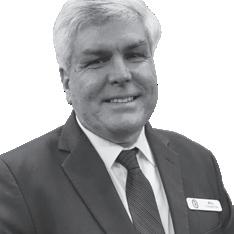



President; Region 2 Director
Bill Thornton
Wissahickon Chimney & Fireplace wissahickonvalleysweep@yahoo.com
Vice President; Region 4 Director
Debbie Wiedwald
Blackburn’s Chimney Sweeps debbie@blackburnschimney.com
Treasurer; At-Large Director
Steve Scally
Fireside Sweeps firesidesweeps@comcast.net


Region 5 Director
David Steward
Copper Ridge Chimney copperridgechimney@gmail.com
Region 6 Director
Michaele Dempsey
Professional Chimney Sweep prochimneymichaele@gmail.com



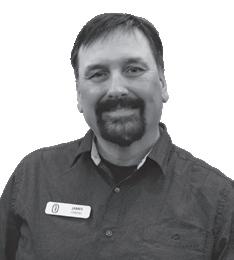
Secretary; At-Large Director
Robby Murphy
Hudson Valley Chimney Service rmurphy@hudsonvalleychimney.com
Region 1 Director
Matt Mair
Black Moose Chimney and Stove matt@blackmoosechimney.com
Region 3 Director
James Owens
Owens Chimney Systems james@owenschimneysystems.com
Advocacy
Debbie Wiedwald
Blackburn’s Chimney Sweeps
Bylaws
Matt Mair
Black Moose Chimney and Stove
Certification
Steve Sobczak
Total Chimney Care
Education
David Steward
Copper Ridge Chimney



At-Large Director
Jake Cromwell
Top Hat Chimney and Roofing jake@tophatchimneyandroofing.com
At-Large Director
Gary Smalling
Smalling Masonry gary.smalling@smallingmasonry.com


At-Large Supplier Rep
Doug Rivas
New England Chimney Supply drivas@nesbestflex.com
Ethics
James Owens
Owens Chimney Systems
Events
Doug Rivas
New England Chimney Supply
Governance
Robby Murphy
Hudson Valley Chimney Service
Marketing
Jake Cromwell
Top Hat Chimney and Roofing
Membership
Michaele Dempsey
Professional Chimney Sweep
NFPA 211; NFPA 54
Jim Brewer
SureFire Training Academy
NFPA 31; Tech. Advisory Council
Steve Scally
Fireside Sweeps
UL 1390; UL 1391
Dan Freeman
Freeman Fire

